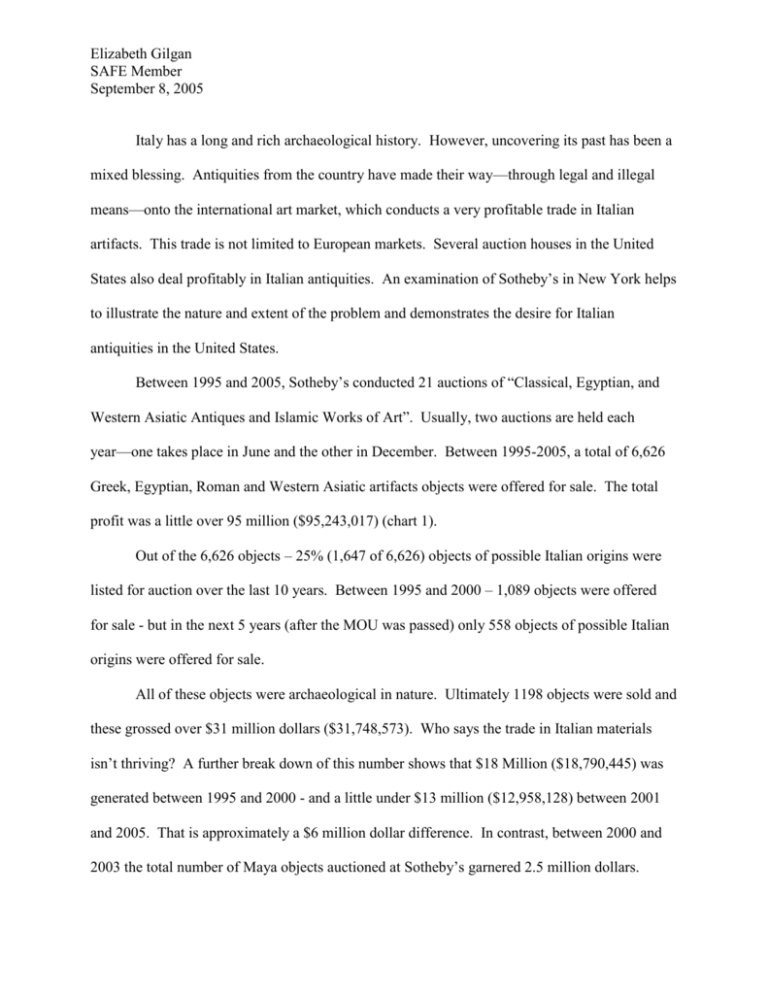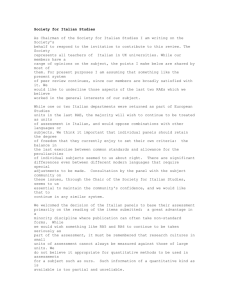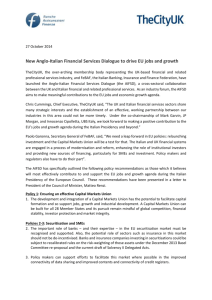Italy has a long and rich archaeological history
advertisement

Elizabeth Gilgan SAFE Member September 8, 2005 Italy has a long and rich archaeological history. However, uncovering its past has been a mixed blessing. Antiquities from the country have made their way—through legal and illegal means—onto the international art market, which conducts a very profitable trade in Italian artifacts. This trade is not limited to European markets. Several auction houses in the United States also deal profitably in Italian antiquities. An examination of Sotheby’s in New York helps to illustrate the nature and extent of the problem and demonstrates the desire for Italian antiquities in the United States. Between 1995 and 2005, Sotheby’s conducted 21 auctions of “Classical, Egyptian, and Western Asiatic Antiques and Islamic Works of Art”. Usually, two auctions are held each year—one takes place in June and the other in December. Between 1995-2005, a total of 6,626 Greek, Egyptian, Roman and Western Asiatic artifacts objects were offered for sale. The total profit was a little over 95 million ($95,243,017) (chart 1). Out of the 6,626 objects – 25% (1,647 of 6,626) objects of possible Italian origins were listed for auction over the last 10 years. Between 1995 and 2000 – 1,089 objects were offered for sale - but in the next 5 years (after the MOU was passed) only 558 objects of possible Italian origins were offered for sale. All of these objects were archaeological in nature. Ultimately 1198 objects were sold and these grossed over $31 million dollars ($31,748,573). Who says the trade in Italian materials isn’t thriving? A further break down of this number shows that $18 Million ($18,790,445) was generated between 1995 and 2000 - and a little under $13 million ($12,958,128) between 2001 and 2005. That is approximately a $6 million dollar difference. In contrast, between 2000 and 2003 the total number of Maya objects auctioned at Sotheby’s garnered 2.5 million dollars. Elizabeth Gilgan SAFE Member September 8, 2005 Chart 2 is a break down of prices per year. Even though the majority of Italian archaeological objects sold in the last 10 years were priced between $1,000 and $5,000, almost 17% of the objects were sold for over $100,000. The most expensive object, sold on June 14, 2000, was a, Bronze head that has a verifiable provenance dating to the 1700s. The object sold for over 4 million ($4,515,750). The archaeological materials that make up this study, span a period of time that extends from the 9th Century BC to 7th Century AD. While marble and bronzes made up most of the materials offered, vessels were most favored by buyers accounting for 28% (454 of 1,646) of the sales. However, sculpture objects were not far behind – they made up 26% (422 of 1,646) of the sales. What about the provenance of the materials listed for auction, particularly in reference to acquisitions prior to the 1970 UNESCO Convention? Of the 1,647 objects auctioned only 38% (632 out of 1,647) have provenances—and only 13% (209 out of 1,647) date to before 1970. 7% (108 out of 1,647) objects were acquired between 1971 and 1980. 11% (178 out of 1,647) artifacts had provenances for the period between 1981 and 1999 and 8 objects were acquired between 2000 and the present. 7% (122 out of 1,647) objects had provenances but no date associated with them (Chart 5). Italy ratified the Convention on the Means of Prohibiting and Preventing the Illicit Import, Export and Transfer of Ownership of Cultural Property in 1978. According to this study, approximately 317 objects had provenances before 1978. 1330 objects could have come in before the convention was ratified or Elizabeth Gilgan SAFE Member September 8, 2005 after. Only 17 of the objects for the past 10 years offered for auction by Sotheby’s of New York had archaeological context. On a happier note – what makes me think the MOU is working are the following three points: 1) Fewer objects were auctioned after the MOU went in to effect. (1089 objects were auctioned between 1995 and 2000) and 558 after the MOU (2001-2005) 2) There is less of a profit between 2001-2005 - almost $6 million dollars ($5,832,317) less than 1995 to 2000, and; 3) The market is responding to the MOU. This can be seen in the provenance of the objects. Between 1995 and 2000 – there is a high ratio of objects being auctioned without provenance. From 2001 to the present, fewer objects without a provenance were being auctioned (Chart 6, 7 and 8). The data from Sotheby’s confirms the ongoing desire for Italian materials and demonstrates their value as a marketable commodity. This information also reveals the effectiveness of the MOU. It certainly does appear that Sotheby’s responded to the pressure exerted by the legislation. The trade in Italian antiquities is a multi-million dollar operation and the art market’s desire for Italian objects leads to continued looting of archaeological sites in an effort to acquire materials to meet demand. People’s desire to acquire objects from the past is not going to disappear. The international community needs to get a handle on what is being sold, how it is being sold, and at what price for how much it is being sold. Acquiring this information can help protect is the objects that are still in the ground.









